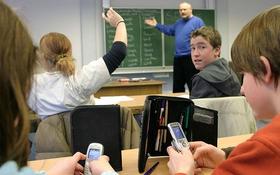Serving 377 students in grades Kindergarten-5, William G. Paden Elementary School ranks in the top 20% of all schools in California for overall test scores (math proficiency is top 20%, and reading proficiency is top 20%).
The percentage of students achieving proficiency in math is 50-54% (which is higher than the California state average of 34%). The percentage of students achieving proficiency in reading/language arts is 60-64% (which is higher than the California state average of 47%).
The student-teacher ratio of 25:1 is higher than the California state level of 21:1.
Minority enrollment is 70% of the student body (majority Asian and Hispanic), which is lower than the California state average of 80% (majority Hispanic).
Quick Facts (2026)
- Grades: Kindergarten-5
- Enrollment: 377 students
- Student-Teacher Ratio: 25:1
- Minority Enrollment: 70%
- Overall Testing Rank: Top 20% in CA
- Math Proficiency: 50-54% (Top 20%)
- Reading Proficiency: 60-64% (Top 30%)
- Science Proficiency: 40-49% (Top 30%)
- Source: National Center for Education Statistics (NCES), CA Dept. of Education
Top Rankings
William G. Paden Elementary School ranks among the top 20% of public schools in California for:
Category
Attribute
Overall Rank
Math Proficiency
Diversity
School Overview
William G. Paden Elementary School's student population of 377 students has stayed relatively flat over five school years.
The teacher population of 15 teachers has declined by 21% over five school years.
Grades Offered
Grades Kindergarten-5
Total Students
377 students
Gender %
Total Classroom Teachers
15 teachers
School Calendar
School Rankings
William G. Paden Elementary School ranks within the top 20% of all 9,523 schools in California (based off of combined math and reading proficiency testing data).
The diversity score of William G. Paden Elementary School is 0.78, which is more than the diversity score at state average of 0.63. The school's diversity has stayed relatively flat over five school years.
Overall Testing Rank
#1748 out of 9523 schools
(Top 20%)
(Top 20%)
Math Test Scores (% Proficient)
50-54%
34%
Reading/Language Arts Test Scores (% Proficient)
60-64%
47%
Science Test Scores (% Proficient)
40-49%
29%
Student-Teacher Ratio
25:1
21:1
American Indian
1%
1%
Asian
26%
12%
Hispanic
19%
56%
Black
8%
5%
White
30%
20%
Hawaiian
n/a
n/a
Two or more races
16%
6%
All Ethnic Groups
Eligible for Free Lunch
37%
54%
Eligible for Reduced Lunch
10%
8%
School Statewide Testing
School District Name
Source: National Center for Education Statistics (NCES), CA Dept. of Education
Frequently Asked Questions
What is William G. Paden Elementary School's ranking?
William G. Paden Elementary School is ranked #1748 out of 9,523 schools, which ranks it among the top 20% of public schools in California.
What schools are William G. Paden Elementary School often compared to?
William G. Paden Elementary Schoolis often viewed alongside schools like Ruby Bridges Elementary School, Maya Lin, Franklin Elementary School by visitors of our site.
What percent of students have achieved state testing proficiency in math and reading?
50-54% of students have achieved math proficiency (compared to the 34% CA state average), while 60-64% of students have achieved reading proficiency (compared to the 47% CA state average).
How many students attend William G. Paden Elementary School?
377 students attend William G. Paden Elementary School.
What is the racial composition of the student body?
30% of William G. Paden Elementary School students are White, 26% of students are Asian, 19% of students are Hispanic, 16% of students are Two or more races, 8% of students are Black, and 1% of students are American Indian.
What is the student-teacher ratio of William G. Paden Elementary School?
William G. Paden Elementary School has a student ration of 25:1, which is higher than the California state average of 21:1.
What grades does William G. Paden Elementary School offer ?
William G. Paden Elementary School offers enrollment in grades Kindergarten-5
What school district is William G. Paden Elementary School part of?
William G. Paden Elementary School is part of Alameda Unified School District.
In what neighborhood is William G. Paden Elementary School located?
William G. Paden Elementary School is located in the West Alameda neighborhood of Alameda, CA. There are 8 other public schools located in West Alameda.
School Reviews
Review William G. Paden Elementary School. Reviews should be a few sentences in length. Please include any comments on:
- Quality of academic programs, teachers, and facilities
- Availability of music, art, sports and other extracurricular activities
Recent Articles

Public School Transportation & Commute Planning Guide
Learn how public school transportation and commute planning can help families prepare for the coming school year safely and efficiently.

New Public School Safety Protocols 2025–26 Guide
Learn how new public school safety protocols for 2025–26 affect students, parents, and schools nationwide.

How Technology Transforms Education in 2025
Explore how technology shapes learning today, with updated data, policy context, trends, and real-world implications for students, educators, and families.





